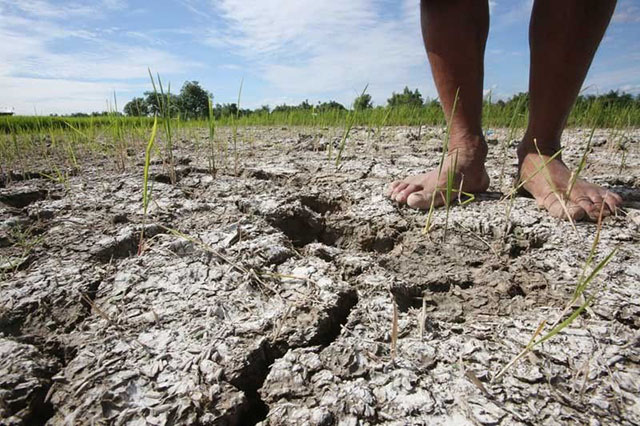- Philippines seen to experience El Nino in Feb to May
- Government urges early imports of commodities
- Cabinet ministers to review macroeconomic assumptions
The Philippines is tempering its economic growth outlook for next year as it braces for “difficult months” when the El Nino weather phenomenon takes its toll, its economic planning minister said on Wednesday.
While the medium-term gross domestic product (GDP) growth of 6.5%-8% is still being targeted, its higher end is already out of the range for next year, Economic Planning Secretary Arsenio Balisacan told a press conference.
The government is monitoring risks like El Nino and geopolitical tensions that could raise uncertainty and disrupt supply chains, Balisacan said.
In the Philippines and other parts of Asia, El Nino usually causes hot, dry weather that results in lower agricultural production and disruption in water and power supplies.
Sixty-five provinces, or about 77% of the Philippines, could suffer from moderate-to-severe drought in February to May next year, the science and technology ministry said on Tuesday.
The government will ask traders to frontload their commodity imports, Balisacan said.
“The time to store is now and if such storage happens early, we can moderate the increases in prices next year.”
The government is also considering extending a reduction in tariffs for commodities like meat, corn, and rice beyond the Dec. 31, 2023 deadline.
Philippine inflation averaged 6.2% in January to November, well above the central bank’s 2%-4% target.
“Managing this El Nino is very crucial,” Balisacan said. “If we intervene enough, early enough and fast enough, we may be able to reduce upward pressure on prices.”
The farm sector accounts for less than a tenth of the domestic economy’s overall output.
For this year, the government is confident it can still hit the lower end or stay in the vicinity of its 6%-7% GDP growth target.
“Inflation has moderated and the labour market has been performing,” Balisacan said.
The Philippine economy grew 5.5% in January to September.
Cabinet officials involved in the economic cluster will meet on Friday to discuss macroeconomic assumptions.
– Reporting by Mikhail Flores; Writing by Neil Jerome Morales; Editing by Kanupriya Kapoor and Michael Perry

